Is the Bronx not entitled to its own High Line park?
by Beatriz Muylaert

Strip of land between Major Deegan Expressway and Putnam Ave which could become a park in Kingsbridge neighborhood in the Bronx. Photo credit: Beatriz Muylaert
For decades, locals of Kingsbridge and Riverdale have discussed the idea of creating an extension of Van Cortlandt Park down to the Spuyten Duyvil Creek in the Bronx. The thought becomes more prescient when crossing one of the bridges over Major Deegan Expressway, overlooking a fenced vacant lot where the idea could be materialized.
The first part of this ambitious and long-term project, informally called Putnam Greenway, would occur on land that stretches almost a mile long and 40 feet wide, running from Van Cortlandt Park South to 230th Street between Major Deegan Expressway and Putnam Avenue. The city thought it had a deal to buy this land, but rising real estate values and a change in the proprietor company leadership has brought negotiations to a halt.

Outline of the land owned by CSX Corporation where most of Putnam Greenway would be. Map source: Google Maps 2018
The land used to be home to a train track, and is now in the hands of the CSX Corporation, a holding company which focuses on rail transportation and real estate in North America. The first step would be for the city to purchase this land, but CSX is not making things easy. The company has stepped back from agreements made in 2017 and is asking for more money.
“We feel that that’s not bargaining in good faith,” said Bob Bender, chair of Community Board 8 Parks and Recreation committee. “Once you make a commitment, that commitment should be binding on the company regardless of who the CEO is.” Members of the Kingsbridge and Riverdale Community Board consider it unethical for CSX to renege the pre-established agreement.
CSX and the City
One of the more famous parks built on a former CSX property in Manhattan, the High Line, had a similar past. After falling into disuse for many years, another conservancy group, Friends of the High Line, started advocating for the park in the late 1990s. CSX donated the structure to the city in 2005, and in 2009, the High Line was inaugurated as a public park.
The Putnam Greenway follows that same narrative: a former railroad owned by CSX, in a community that would welcome a new park. The city asked CSX to donate or sell the land for a reasonable price, but the company isn’t willing to offer Bronxites the same generosity it extended to Manhattanites.
Putnam Railroad
New York Central Railroad used to operate a train connecting northern Westchester to Harlem. It ran through this piece of land and into Van Cortlandt Park for a century. The passenger service was discontinued in the 1950s because it was used by less than 500 commuters daily, according to a New York Times article from March 1958.
It became obsolete in the following decades and by the 1980s, the section of railroad that ran through Van Cortlandt Park was used as a recreational trail. Putnam Trail has been a nature trail ever since, but there are plans for change.
The Van Cortlandt Park Master Plan 2034, proposes paving the northern part of Putnam Trail. It was the most divisive and heated issue Bender oversaw in his tenure at the Parks and Recreation Committee. While some argued for maintaining the trail’s wild and unkempt feel, others were in favor of paving and making it more widely accessible and used, as well as resolving flooding issues common on the path. The project is currently in procurement phase with construction expected to begin in early 2019.
The southern part of Putnam didn’t have such luck. It has been fenced off and abandoned for decades. It was only in 2016 – after Laura Walter, the chair of Environment and Sanitation committee, complained it was being used as a dump – that CSX cleaned up the area. It’s now predominantly green, but still vacant and lying fallow.
A long walk on the wild side
Friends of Van Cortlandt have been eyeing this stretch for decades. There are drawings of ideas for the park dating back to the late ‘90s, when acquisition talks commenced, according to Christina Taylor, executive director of the conservancy.
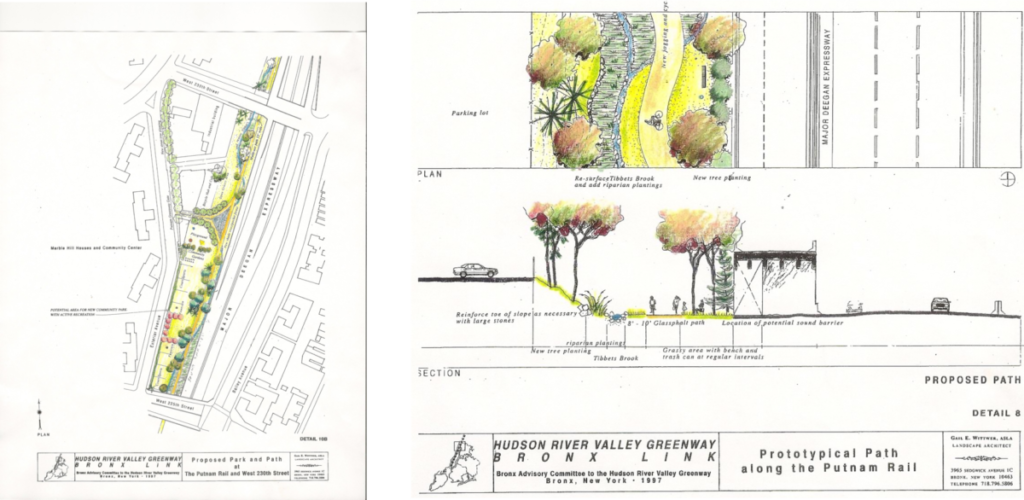
Proposed Park and Path drawings from 1997. Illustration Credit: Bronx Advisory Committee to the Hudson River Valley Greenway. Courtesy of Friends of Van Cortlandt Park
Negotiations are as old as the dream. “The NYC Parks Department and Conrail, a predecessor company to CSX, discussed converting the former rail line into a greenway in the late 1990s,” said Jacqueline Gold, director of communications of Department of Citywide Administrative Services. “But Conrail dissolved and its assets were acquired by CSX before any formal negotiations began.”
Last year a resolution passed urging CSX to donate or sell the property to the city at a reasonable price, as it did with the High Line. The initial value the city offered, $2 million, was far less than the $13 million CSX requested. To resolve the disparity, both parties jointly hired an independent appraiser to evaluate the land in 2017. Both agreed the appraised value would be the final negotiation price.
Negotiations seemed to finally be coming to a close, but the unexpected death of CSX CEO in December brought things to a halt. The new CEO, James F. Foote, rejected previously made agreements. With the value of real estate rising in the area, Foote asked for a much higher price, two or three times more than the appraised value. The precise amount was not disclosed – the city does not comment on values of ongoing negotiations. But according to Council member Andrew Cohen the appraised value is close to $4 million.
Bender is concerned with responsibility to taxpayers money. He said it would be unfair to pay more than what the land has been valued on by the independent appraisal. Cohen has the same opinion. When asked about the new amount asked for the land, he said, “Right now it’s not about the money.” It’s about fairness.
Land of dreams
There are different views on the destiny of Putnam Greenway among those who want the land to become public. Some ideas include: a pathway that would serve as an alternative to Broadway’s overshadowed sidewalks, a bike lane improving North-South circulation, and–the most ambitious one–the resurfacing of Tibbetts Brook, a stream which originally ran down from Westchester County to the Harlem River.
Tibbetts Brook was piped into the Broadway sewage system in 1912, enabling the surrounding marshes to be filled in, making the land South of Van Cortlandt Park more suitable for development. An ongoing project led by Friends of Van Cortlandt Park – Daylighting Tibbetts Brook – aims to resurface and reestablish the brook’s natural flow to the Harlem River. The first stage is in motion inside Van Cortlandt Park, and Putnam Greenway would be its second stage.
The city could also benefit from this idea. Alleviating an overloaded sewage system should reduce floods in the area, something which causes the city to spend many dollars in fines every year.
Opinions diverge on what kind of park would emerge, but most people, including Taylor, agree they’d be happy as long as it is open for community use.
Fenced off
While the city and CSX fail to reach an agreement, the land is fenced off from the community.
Community Board President Rosemary Glinty has sent a statement urging elected officials to assist. “We look forward to working with you to help make this happen as promised,” wrote Glinty, “so that we can move forward on construction of a needed Greenway for the Bronx.”
The community board has received positive responses from elected officials. Cohen said he is working with Senator Chuck Schumer’s office to put pressure in CSX and try to get them back to the terms of negotiation.
CSX Corporation declined to comment on the story.

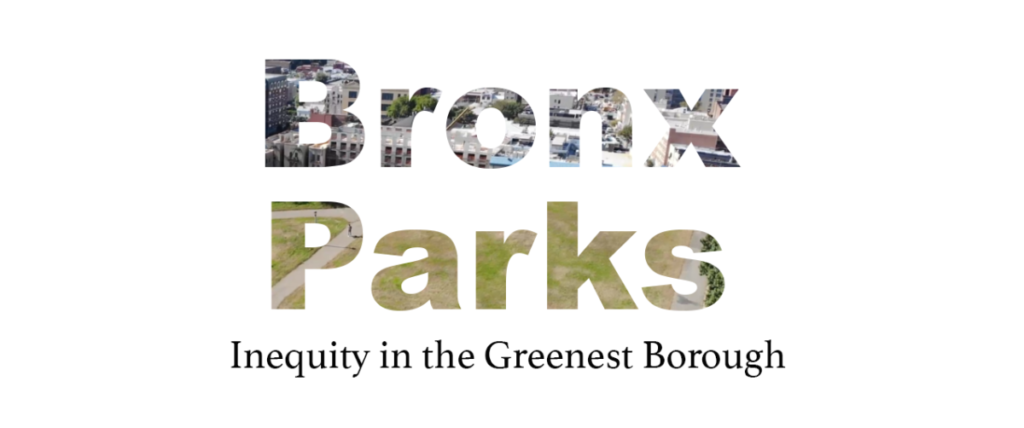



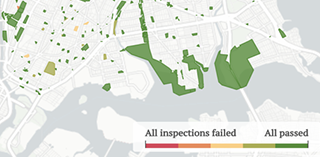 Tracking inspection records in Bronx public parks | Lucas Manfield
Tracking inspection records in Bronx public parks | Lucas Manfield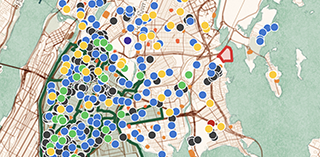 Mapping amenities in Bronx public parks | Leafy Yan
Mapping amenities in Bronx public parks | Leafy Yan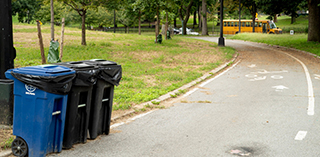 Acceptable or unacceptable: trash and inequality in two Bronx parks | Max Horberry
Acceptable or unacceptable: trash and inequality in two Bronx parks | Max Horberry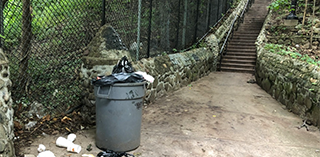 The little west Bronx park that could, defying decade of cleanup efforts | Lucas Manfield
The little west Bronx park that could, defying decade of cleanup efforts | Lucas Manfield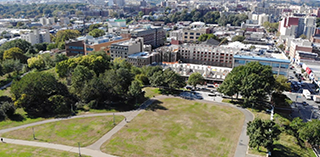 New life being brought to Tremont Park | Allen Devlin
New life being brought to Tremont Park | Allen Devlin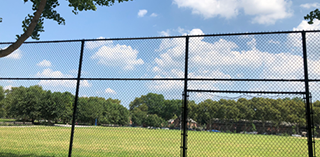 Take out the old bring in the new: Soundview Park | Olivia Eubanks
Take out the old bring in the new: Soundview Park | Olivia Eubanks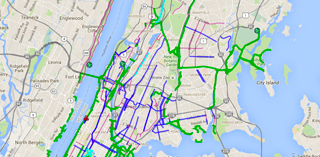 Learning to bike in the Bronx | Virginia Norder
Learning to bike in the Bronx | Virginia Norder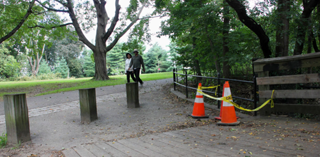 Private donors saved New York City parks—but for whom? | Brett Bachman
Private donors saved New York City parks—but for whom? | Brett Bachman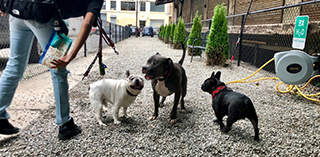 Privatized puppy parks: a Bronx tail | Tristan Cimini
Privatized puppy parks: a Bronx tail | Tristan Cimini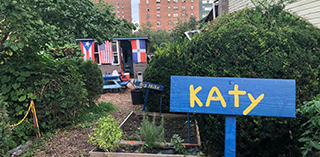 A Tale of Two Gardens | Tiya Thomas
A Tale of Two Gardens | Tiya Thomas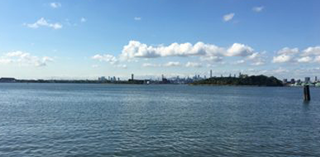 Access to North and South Brother Islands still in question | Savannah Jacobson
Access to North and South Brother Islands still in question | Savannah Jacobson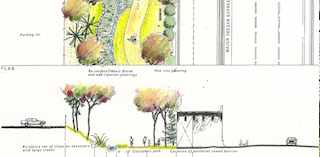 Is the Bronx not entitled to its own High Line park? | Beatriz Muylaert
Is the Bronx not entitled to its own High Line park? | Beatriz Muylaert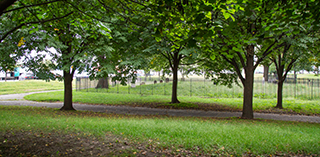 Ongoing struggle to get recognition for slave burial ground at Joseph Rodman Drake Park | Aliya Chaudhry
Ongoing struggle to get recognition for slave burial ground at Joseph Rodman Drake Park | Aliya Chaudhry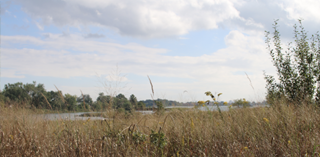 Bronx River Alliance: Water pollution has been the highest in years | Joasia E. Popowicz
Bronx River Alliance: Water pollution has been the highest in years | Joasia E. Popowicz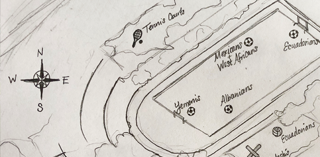 Immigrants face barriers to Bronx parks | Seyma Bayram
Immigrants face barriers to Bronx parks | Seyma Bayram